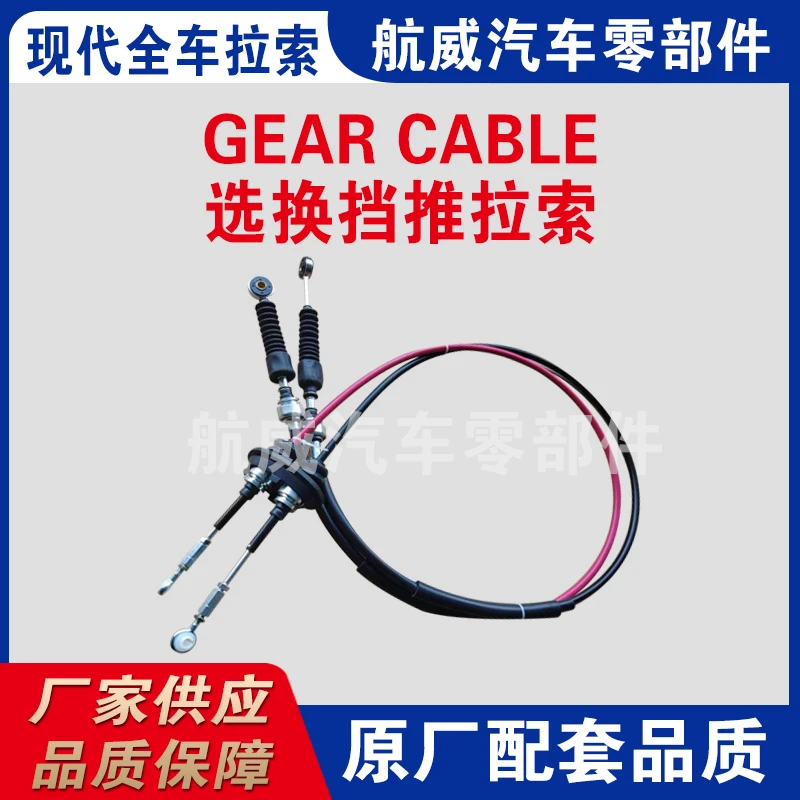Throttle Cable Control for Enhanced Performance and Smooth Acceleration in Vehicles
Understanding the Throttle Body Cable A Crucial Component in Vehicle Performance
The throttle body cable, often overlooked in the realm of automotive repairs and modifications, is a pivotal part of a vehicle's performance and responsiveness. The throttle body itself is a vital component of the air intake system, controlling how much air enters the engine, which ultimately affects the engine's power output and efficiency. The throttle body cable connects the accelerator pedal to the throttle body, allowing the driver to control the vehicle's speed and acceleration.
The Function of the Throttle Body Cable
At its core, the throttle body cable serves as a mechanical link between the accelerator pedal and the throttle body. When the driver presses the accelerator pedal, this action pulls the cable, which in turn opens the throttle valve in the throttle body. This opening allows more air to enter the engine, which, when combined with the appropriate amount of fuel, leads to an increase in power and speed. It’s a simple yet effective mechanism that plays a crucial role in the vehicle's operation.
Common Issues with Throttle Body Cables
Like any mechanical component, throttle body cables can experience wear and tear over time. Common issues include fraying, kinking, or breaking of the cable. A malfunctioning throttle body cable can lead to several problems, including unresponsive acceleration, erratic engine behavior, or even complete throttle failure, which can be dangerous while driving.
Symptoms of a faulty throttle body cable may present as a delayed response when pressing the accelerator pedal, or the engine may not return to idle properly when the pedal is released
. If the throttle body cable becomes stuck, it can lead to unintended acceleration, creating significant safety concerns.Maintenance and Replacement
throttle body cable

Maintaining the throttle body cable is essential for optimal vehicle performance. Regular inspections can prevent unexpected failures and ensure that the cable operates smoothly without any obstructions or damage. If any issues are detected, it is advisable to replace the cable promptly.
Replacing a throttle body cable is generally a straightforward process, but it should still be approached with caution. First, disconnect the negative battery cable to ensure safety. Next, the old cable must be removed from both the accelerator pedal assembly and the throttle body. It’s important to note the routing of the old cable to ensure the new cable is installed correctly.
Once the old cable is removed, the new throttle body cable can be threaded through the same path. After securing it to the throttle body and the accelerator pedal, it’s essential to check the cable's tension and ensure smooth operation. Finally, reconnect the battery and test the accelerator pedal for responsiveness before taking the vehicle on the road.
Upgrading the Throttle Body Cable
For performance enthusiasts, upgrading the throttle body cable can significantly enhance vehicle responsiveness. Aftermarket throttle body cables often feature improved materials and designs that reduce friction and increase durability. These upgrades can provide a more direct connection between the accelerator pedal and the throttle body, resulting in improved throttle response and a more engaging driving experience.
Conclusion
The throttle body cable may not be the most glamorous component of a vehicle, but its importance cannot be overstated. It serves as the lifeline between driver intent and engine performance. Whether you’re experiencing issues with your cable or considering an upgrade to improve responsiveness, understanding this critical part of your vehicle can enhance your driving experience significantly.
Regular maintenance, timely replacements, and potential upgrades of the throttle body cable can lead to a smoother, more responsive driving experience, ensuring that your vehicle performs at its best. Always consult with a professional mechanic or refer to your vehicle’s service manual for guidance on throttle body cable maintenance and replacement procedures to keep your vehicle running safely and efficiently.
-
Workings of Clutch Pipe and Hose SystemsNewsJun.04,2025
-
The Inner Workings of Hand Brake Cable SystemsNewsJun.04,2025
-
The Secrets of Throttle and Accelerator CablesNewsJun.04,2025
-
The Hidden Lifeline of Your Transmission Gear Shift CablesNewsJun.04,2025
-
Demystifying Gear Cables and Shift LinkagesNewsJun.04,2025
-
Decoding Clutch Line Systems A Comprehensive GuideNewsJun.04,2025
